"Ermak" - the world's first arctic icebreaker. To the birthday of Admiral Makarov
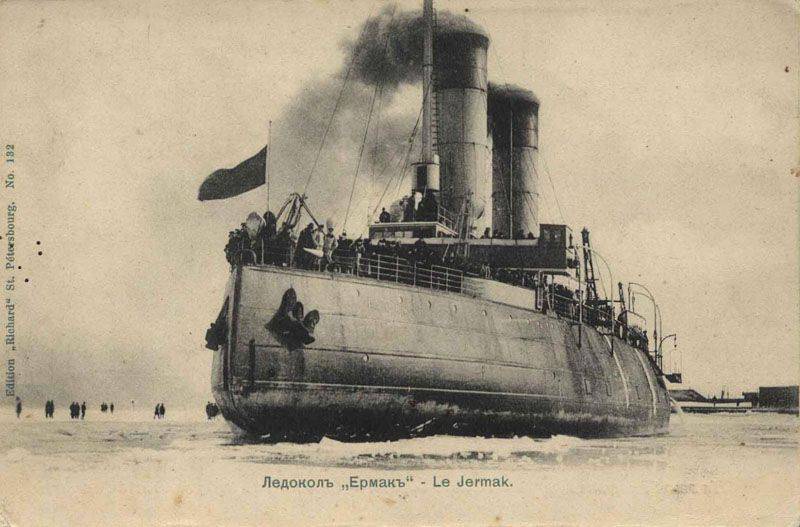
The accomplishments of a great man are difficult to divide into more or less significant. In the active, ebullient and dramatic life of the Russian admiral Stepan Osipovich Makarov, there were enough of those. It is difficult to overestimate the full significance of his contribution to domestic and world science, military affairs and navigation. And among many cases, Makarov’s actual creation of the Russian icebreaker fleetbecause the world's first Arctic-class icebreaker was designed and built under the guidance of an admiral scientist.
Predecessors
The Arctic has always been and remains for Russia the most important strategic region. One has only to look at the map and estimate the length of the coastline in the polar regions. What the Arctic is and why it is needed in St. Petersburg for a long time was not completely clear. From time to time expeditions were sent to the north, but there was no economic need for its full-scale development. In the second half of the XIX century, the eastern regions of Russia and first of all Siberia, in the wake of intensive development, began to feel an urgent need to export their products to the European part of the country and further abroad. The recently built Transsib could not fully provide ever-increasing trade, especially since its carrying capacity was still limited, and most of the capacity was taken up by military needs. In the north there was only one port - Arkhangelsk.
While officials in the capital were slowly turning, as it often happened in Russia, the initiative was taken by the enterprising people on the ground. In 1877, the ship “Morning Star” equipped with the money of the merchant and industrialist M. Sidorov delivered goods and various products from the mouth of the Yenisei River to St. Petersburg. Later, in the Russian polar trade between the mouths of the Ob and Yenisei rivers and Arkhangelsk, the English people thrust their long noses. By the 90 years, Mr. Popham’s company concentrated in its hands a message by sea with these remote areas. This case was extremely risky and highly dependent on the ice situation in the Kara Sea. To go to the destination, unload-load the goods and return it was necessary for one very short navigation. The risk of getting stuck in the ice was quite large, so the cost of shipping and the goods themselves was fabulous. In some years, due to the difficult ice situation, it was not possible at all to break through the Ugra ball. The problem of ensuring unimpeded cargo turnover in the Polar region needed to be solved in a fundamental way - special construction ships were needed that could cope with the Arctic ice. The idea of building a large icebreaker has long been in existence, the need for it has been felt year after year, but such an idea turned out to be possible only for such an active, energetic and, most importantly, knowledgeable person like Stepan Osipovich Makarov.
In the era of the sailing fleet ice remained an insurmountable obstacle in the path of ships. All navigation in the freezing ports stopped. In the XVII – XVIII centuries, the fight against ice, if a ship was for some reason rubbed off in relative proximity to its destination, was reduced to the mobilization of the local population armed with saws, crowbars and other hand tools. With great effort and effort a channel was cut through, and the prisoner was released. And then, if the weather conditions allowed. Another way, but again situational, was to shoot cannons on the ice, if the caliber of the nucleus and the thickness of the ice allowed, or to drop the gun on the ice. There is a case in which in the year of the capture of Vyborg, the Russian frigate “Dumkrat” passed over the ice with the help of a small gun suspended from the bowsprit and periodically lowered and raised. Another way to fight the ice was undermining - first, gunpowder was used for these purposes, and later dynamite was used. In Russia, on some ships mounted the so-called ice ram, made of wood or metal. With it, it was possible to cope with relatively thin ice. But all of the above referred mainly to auxiliary or forced measures.
In 60-s of the XIX century in Russia was developed, and in 1866, the original project of the engineer Euler was tested. The vessel was equipped with a metal battering ram and, in addition to it, a special crane for dropping special weights weighing 20 – 40 poods onto the ice. The crane was driven from a steam engine, weights were raised to a height of about 2,5 meters, and then dumped onto the ice. To overcome particularly strong ice floes, the ship was equipped with a pair of mines. The initial tests showed quite satisfactory results, and the gunboat Experience was converted into a kind of kettlebell-lifting icebreaker. However, this successful part of the experiment ended - although we could manage to crack small ice with weights, the power of the Experiment machine was clearly not enough to move through crushed ice. Spreading the ice and providing wiring vessels through the channel formed "Experience" could not. There were even more exotic projects to combat ice: for example, equipping a ship with hammers and circular saws or washing out ice with water from special monitors under pressure.
The first more or less technically advanced ship to combat ice was created again in Russia. For a long time, communication between the Kronstadt fortress and St. Petersburg in the autumn-spring period was almost impossible - the strength of the ice was insufficient for a sleigh transport. Mikhail Osipovich Britnev, a Kronstadt entrepreneur and shipowner, decided to find a way to extend the navigation between Oranienbaum and Kronstadt for several weeks. For this purpose, he converted one of his steamboats - a small screw tug. At his direction, the nose was cut at an angle of 20 degrees to the keel line, following the pattern of the Pomors torus boats. The Pilot icebreaker was small, only 26 meters long, and equipped with a 60-strong steam engine. Later, two more icebreakers, the “Fight” and the “Bui”, were built to help him. While the Russian bureaucracy was straining to understand the enormous significance of this invention, foreigners came flying to Kronstadt to Britnev, like sparrows for not yet threshed ricks. In winter, the 1871 of the year, when the worst frost tightly bound the shipping artery, the Elbe River, the most important for Germany, the German specialists from Hamburg bought the Pilot drawings from Britnev for 300 rubles. Then there were guests from Sweden, Denmark and even the United States. All over the world, icebreakers began to be built, the progenitor of which was the offspring of the Kronstadt self-taught inventor. At the end of the 19th century, icebreaking steamboats and ferries appeared, finally, in Russia - on the Volga and on the island of Baikal. But all of these were ships of relatively small size for coastal navigation. The country needed a large icebreaker to provide arctic cargo transportation. Any idea or project turns into a heap of dust-covering papers, if there is no person who, like an icebreaker, makes his way among the ices of skepticism. And such a tireless person was - his name was Stepan Osipovich Makarov.
Icebreaking idea S.O. Makarov and the information struggle in his defense
The future admiral, scientist, inventor and researcher was born on January 8 1849, in the city of Nikolaev, in the family of a naval officer. Already in 1870, his name becomes known thanks to articles on the ship's unsinkability theory. During the Russian-Turkish war of 1877 – 1878, Makarov carried out successful combat use of mine-torpedo weapons. Then there was the command of the steamer "Taman", a study, including for military purposes, currents between the Black and Marmara Seas, a world tour on the corvette "Vityaz". In 1891 – 1894, Makarov is a Marine Artillery Inspector. At the end of the 19th century, already being a vice-admiral, he was in charge of the Baltic Sea Practical Squadron.
For the first time the idea of building a large Arctic icebreaker Makarov expressed to his friend, a professor at the Naval Academy, FF. Wrangel in 1892 year. At this time, the Norwegian explorer and polar explorer, Fridtjof Nansen, was preparing for his voyage on the Fram. Makarov, as a person with a deep, dynamic mind, understood well the significance of the Northern Sea Route connecting western and eastern regions of Russia and located also in its territorial waters. Mastering it will significantly expand the country's trade and economic opportunities. Gradually, the idea of purely theoretical calculations began to take on clearer forms. Makarov proposed to build a large ship from good steel at once. The engine was supposed to be a steam engine of enormous power at that time - 10 thousand hp. In a special explanatory note to the Maritime Ministry of the feasibility of building a large icebreaker, the scientist emphasized not only the scientific and research value of such a ship, but also the military, in particular, the possibility of quickly relocating warships to the Far East. Thus, long before the use of the Northern Sea Route, Makarov already clearly understood its importance for Russia.
Traditionally conservative, the military leadership responded negatively with a great deal of skepticism. Another on-site Makarova would have declined the short-sightedness and short-sightedness of those in power in all cases and calmed down. But Makarov was made from another test. 12 March 1897, the tireless admiral, gave an extensive lecture at the Academy of Sciences, where he argued in detail and soundly the prospects for having a large icebreaker in the fleet, or rather several. According to the lecturer, this would contribute not only to unhindered navigation in the Gulf of Finland in winter conditions, but would also establish regular communication between the mouths of the Ob and Yenisei rivers and foreign ports, which entailed considerable economic benefits. The next step in the informational struggle for the icebreaker was organized with the help of Professor F.F. Wrangel and the hugely successful lecture “Go to the North Pole right Through!”. The idea of building an icebreaker has ceased to be behind the scenes and is being discussed in a narrow circle of scientists and technical specialists. She talked about the public and the press. But the domestic bureaucracy has traditionally been strong in defense against bold ideas and projects. And, quite likely, disputes about the need to build an icebreaker in Russia would not subside until some enterprising foreigners, taking advantage of Makarov's ideas, would not have created such a ship in their possession. Then the bureaucratic army would have in unison exclaimed: “Ah, here the advanced West surprised us again, now let's build this at our place!”
Fortunately, a prominent Russian scientist, Academician D.I. Mendeleev. Having connections at the very top of the empire, Mendeleev went directly to Finance Minister S.Yu. Witte. The minister’s tenacious mind immediately recognized the economic benefits in the Makarov concept. Later, Makarov was organized a meeting with him, at which the admiral finally convinced the Witte who had a huge influence in the state machine of the need to build an icebreaker. The admiral is promised support, and while the hidden flywheels are spinning and the secret levers of power are being pushed, Makarov was asked to make a big study tour of the North to find out more clearly on the conditions in which the new ship will operate.
Makarov first travels to Sweden, where he meets with the famous polar explorer, Professor Nordenskjold. It was he who in the 1878 – 1879 years on the ship "Vega" first passed the Northern Sea Route. The professor spoke with approval of the ideas of Makarov. After Sweden, Norway and Svalbard were visited. Finished with Europe, Makarov sent already to the Russian North. He visited different cities: Tyumen, Tobolsk, Tomsk. I talked with local merchants and industrialists - everyone understood him, everyone nodded approvingly, but nobody gave the money to build the ship that was so necessary for them. Returning from the trip, Makarov makes a detailed memorandum where he describes in detail the technical requirements for the prospective icebreaker. The admiral insisted on building two icebreakers, but the careful Witte, on reflection, gave the go-ahead for only one ship.
Negotiations with the manufacturer and construction of the ship
In October 1897, a special commission was established under the chairmanship of Makarov himself, which also included Mendeleev, Professor Wrangel, and other prominent specialists. The initial task of the commission was a detailed description of all requirements for the future icebreaker - its technical characteristics, dimensions, strength and unsinkability requirements were described in detail. Compiled a necessary list of mandatory equipment to install. Thus, the technical task was ready. Since the new ship was complicated in execution, it was decided to use the services of foreign shipbuilding companies. Three companies that already have experience in building icebreakers were allowed to compete for the right to build an icebreaker. These were Burmeister and Vine in Copenhagen, Armstrong and Wittworth in Newcastle and the German Shechaw in Elbing. All three participants offered their projects. According to the preliminary opinion of the commission, the Danish project turned out to be the best, Armstrong took the second place, and serious shortcomings were found in German. True, Makarov challenged this opinion and believed that the ideas proposed by Shihau have their own advantages. When agreements with representatives of the plants were reached, they were asked to indicate their prices in sealed envelopes. With the resolution of the commission and with sealed envelopes, Makarov went to Witte, where they were opened. The Germans asked 2 million 200 thousand rubles and guaranteed construction for 12 months, the Danes - 2 million rubles and 16 months, Armstrong - 1,5 million and 10 months. Since the British at the lowest price gave the shortest construction time, Witte chose the English project. In addition, an important factor was the fact that the British offered a ship capable of taking 3 thousand tons of coal instead of the required 1800, thereby almost widows increasing the autonomy of the icebreaker.
14 November 1897 Witte handed a memo to Emperor Nicholas II, which he endorsed with his signature. The first stage of the battle for the icebreaker was won - it remained to be built and tested.
Within a month, Makarov was leaving for Newcastle to conclude an agreement on the construction of a vessel. During negotiations with representatives of the manufacturing company, the admiral kept tight with his usual perseverance and perseverance. It is necessary to give him his due - in order to defend his demands from such hardened businessmen as the sons of Foggy Albion, one must have a dead hold. The admiral insisted on the specification of the Russian Voluntary Fleet when equipping the future icebreaker, which was different from the English one. Makarov achieved control over the construction of the ship at all stages of construction with the obligatory checking of all compartments for unsinkability by filling them with water. The final financial calculation was to be carried out only after the completion of the full test cycle in the Gulf of Finland and then in polar ice. If the icebreaker being tested received any damage in the hull, the manufacturer should have fixed them at his own expense. In addition, if the tests reveal technical imperfection of the adopted design decisions, the company should have eliminated them under the same conditions. The negotiations were difficult, the British rested, but did not want to lose the order. In December 1897, the new ship was finally laid at the shipyard Armstrong and Wittworth.
Having signed the agreement, Makarov departed for the Great Lakes in America - to observe the work of icebreakers. When he returned, he spent some time in the shipyard, after which he left for the Baltic Sea - the summer of the 1898 year was spent in exercises on the squadron. In his absence, the future first captain of the icebreaker, M.P. Vasiliev. We must recognize the advantages of the English builders - they built really fast. Already 17 in October 1898, the ship, at the behest of Emperor Nicholas II, was named "Ermak", was launched. The ship had an 93 meter of length, then after refitting it reached 97 meters. The standard displacement was 8 thousand tons, the ship was equipped with four steam engines with an 2500 horsepower. - three in the stern, one in the bow. The fact is that originally “Yermak” was equipped with one additional nose screw according to the American type - this screw had to pump out the water from under the ice floe in order to facilitate later its crushing. The unsinkability of the Yermak was achieved by the presence of 44 waterproof compartments into which the casing was divided. The icebreaker was equipped with special differential and tilting tanks, which was a technical innovation for that period. The survivability of the ship was provided by a special rescue line, serviced by a pump with a capacity of 600 tons per hour. All premises had winter vestibules and double windows for thermal insulation. February 19 on the "Yermak" raised a commercial flag - it was taken to the balance of the Ministry of Finance, not the Navy. 21 February 1899, the ship went to Kronstadt.
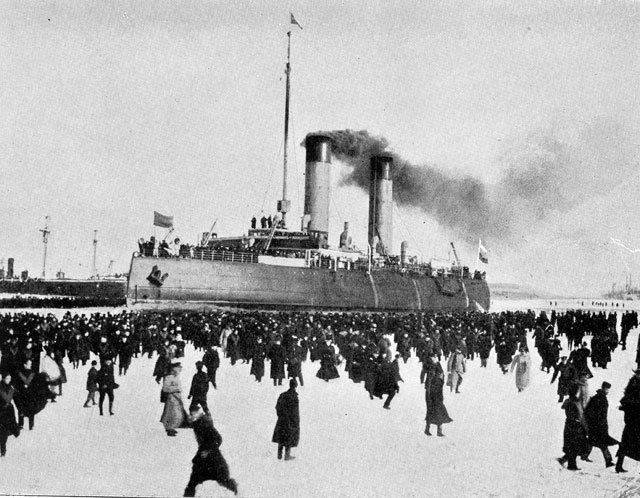
The first contact with the Baltic ice occurred on March 1 - the results were very positive. The new icebreaker easily destroyed its main enemy. 4 March with a large gathering of people "Ermak" arrived in Kronstadt. When the first enthusiasm subsided, the new icebreaker immediately began its immediate work - it freed the ships from the ice first at the port of Kronstadt and then at the port of Revel. In early April, Yermak easily opened the mouth of the Neva - the navigation of the 1899 of the year began unusually early. Makarov became the hero of the day and a welcome guest at receptions and dinner parties. However, these first successes did not turn the head of the tireless admiral. He was well aware that the Baltic ice was just a warm-up before the storming of real Arctic bastions. The preparations for the march to the North began. During the organizational fees there was a dispute Makarova and Mendeleev. Two such bright personalities did not agree on the process of final selection of the route, the tactics of dealing with ice and, finally, unity of command. Disputes became harsher, and, in the end, Mendeleev and his academic group refused to participate in the first Arctic campaign.
The first Arctic navigation and icebreaker refinement
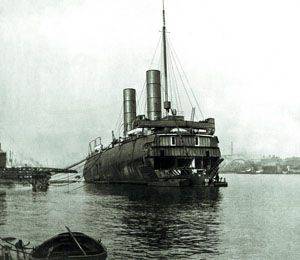
8 May 1899, the Yermak went into its first Arctic voyage. Exactly a month later, on June 8, he met real northern ice in the area of Spitsbergen. Initially, the icebreaker easily dealt with the vanguard of white silence, but then problems began: the skin began to flow, the hull experienced a vibration. Makarov decided to return to England. In Newcastle 14 June ship entered into the dock. On examination, it turned out that the lobe of the propeller, which, being acceptable to the realities of the Great Lakes, was lost, was useless for the Arctic. He was dismantled. Repair lasted a month, after which "Ermak" again went to the North. And again, there were difficulties. 25 July when hitting the icebreaker torus got a leak. It turned out that in practice the given strength of the hull was not enough for such a difficult situation. The ship returned to England again. Domestic press gladly pounced on "Ermak" and its creator. However, our newspaper reporters didn’t have a liberal taint after 1991 — it existed before, just after the revolution, this virus was in deep hibernation. “Yermak” was compared to a useless icicle, the world's first arctic icebreaker was accused of weakness and weakness, and its creator - of adventurism. Newspaper harassment reached such a level that the most authoritative polar explorer Nansen could not stand it and said his word in defense of the icebreaker.
Makarov, not paying attention to newspaper hacks, developed a work plan for the modernization of the icebreaker. In Newcastle, they had to replace the entire nose of the Ermak. While it was being manufactured, the icebreaker was working hard in the Baltic. Among his many acts, one can single out the rescue from stones of the coastal defense battleship "General-Admiral Apraksin" and the rescue of fishermen caught on the torn ice floe - during this rescue operation for the first time stories The fleet and navigation was used by a wireless telegraph (radio), invented by the Russian engineer A.S. Popov. In the spring, “Yermak” returned to Newcastle, where it underwent a thorough alteration — it replaced the nose, dismantled the already useless nasal machine, strengthened the sides. The design of the icebreaker, in the calculations of which, by the way, the young shipbuilder and future academician A.N. Krylov, has become a model for all icebreakers for many decades.
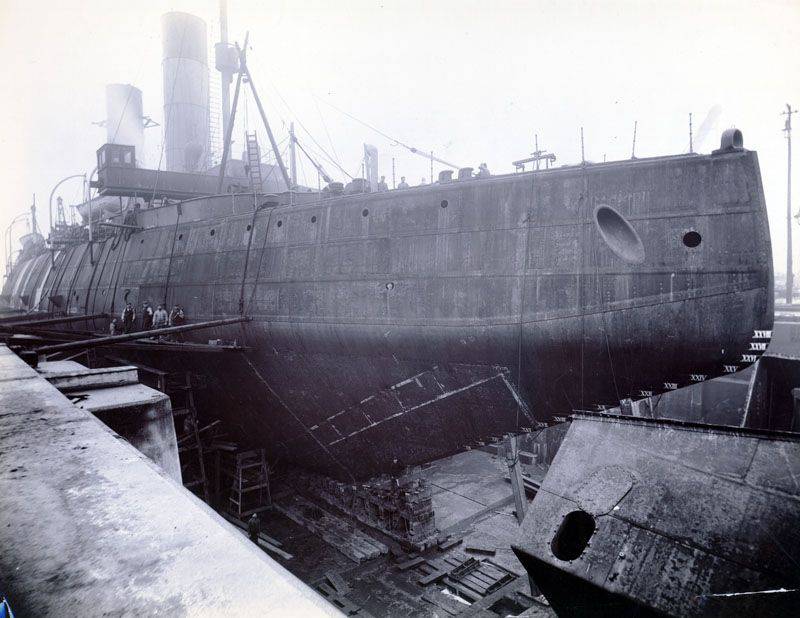
While “Yermak” was modernized with regard to the first voyages in the ice, Makarov led a protracted battle with the domestic bureaucracy, which impeded the sending of an icebreaker to the Arctic. In the end, it was forced to yield to the admiral. In the summer of 1901, Yermak goes to the Arctic. 21 June he left the Norwegian Tromsø, and 25 numbers entered the solid ice. Makarov's calculations were confirmed. The icebreaker confidently withstood the elements, the hull fortress was excellent - no leaks were observed. Alteration of the stem was not in vain. However, in early July, "Yermak" was faced with such a heavy ice situation that it was able to break through to clean water only after a month. The pole remained unconquered abroad, swimming in the Arctic ice is still dangerous. This was largely due to non-constructive solutions embedded in the icebreaker - they were then fully justified by the time and experience of long-term operation. "Yermak" elementary lacked the power of the power plant - after the dismantling of the nose steam engine, it did not exceed the 7500 HP. Despite the fact that the extreme trip of the icebreaker was more successful - there were no breakdowns and leaks - after Makarov was returned, they were relieved of the duties of organizing trial voyages in ice. The place of activity of “Ermak” was limited to the Baltic. Stepan Osipovich was nurturing plans for new expeditions, he believed in his brainchild, but while these issues were being worked out, the Russo-Japanese war began, and Admiral Stepan Osipovich Makarov’s life ended on April 13 on the death of the battleship Petropavlovsk.
Long service icebreaker "Yermak"
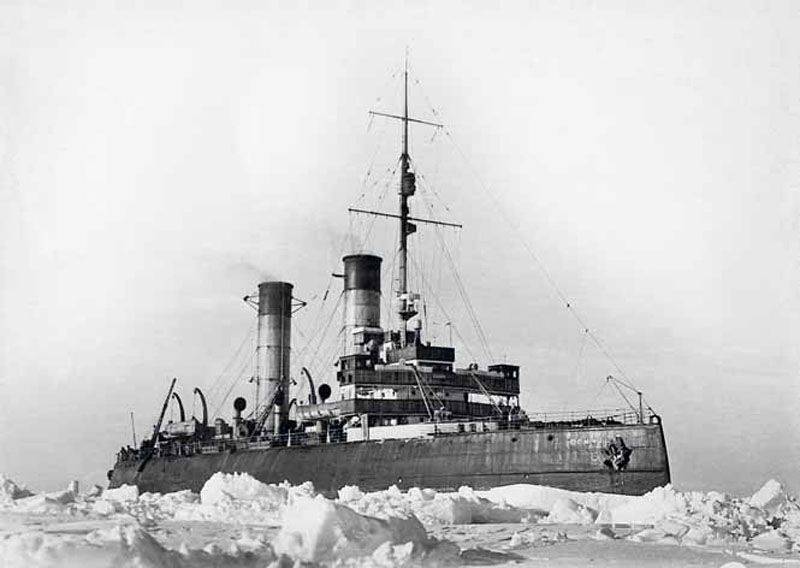
Yermak also had to participate in this tragic war for Russia. At the insistence of the governor in the Far East, the Adjutant General EI Alekseev icebreaker included in the 2 th Pacific Squadron. The fact is that Vladivostok was a freezing port, and the capacity of the small icebreaker Nadezhny located there would not be enough to provide for the deployment of the entire squadron upon arrival. As part of the squadron "Yermak" left Libau, but, fortunately for him, in the area of Cape Skagen one of the steam engines failed. Together with the destroyer Prosperivous, which had defective refrigerators, the icebreaker was sent to Kronstadt. In January 1905, he provides the output of Rear Admiral Nebogatov's 3 th Pacific squadron. In the summer of the same year - conducts a large caravan of merchant ships to the mouth of the Yenisei with cargo for the Siberian railway.
Throughout the decade preceding the First World War, Yermak worked in the Baltic, fighting the ice and from time to time helping the stranded ships. So in 1908, the cruiser “Oleg” was removed from the rocks. In 1909, a radio station was installed on it. With the beginning of the 14 war on November 1914, the icebreaker was mobilized and enlisted in the Baltic Fleet. Despite the need for repairs — the boilers were already old — the icebreaker was actively exploited. It was planned to be used for removing the German light cruiser “Magdeburg” from the stones, however, due to the severe destruction of the latter, this idea was abandoned.
The events of 1917 of the year "Yermak" met in Kronstadt. Revolution revolution, but the ice has not been canceled. And throughout the winter and spring, he provided communication between Kronstadt, Helsingfors and Reval. 22 February 1918, in connection with the approach of German troops to Revel, the icebreaker provided the wiring of two submarines and two transports to Kronstadt. From March 12 to April 22, the famous Baltic Fleet Ice Crossing from Finnish bases to Kronstadt took place. Icebreaker "Ermak" spent more than 200 ships and vessels among the ice. The Baltic Fleet made transitions by detachments, and, accompanying the next of them, the icebreaker again had to return to Helsingfors. For the ice trip the Yermak team was awarded the Honorary Red Banner.
More or less regular work was resumed in the 1921 year, when the Baltiysky plant finally managed to repair the icebreaker. Until 1934, Yermak continued to work in the Baltic. His activities were given great importance - after all, he created the working conditions of the Petrograd port. For example, in 1921, the port provided 80% of Soviet Russian foreign trade. Finally, after an almost 30-year break, the icebreaker returns to the Arctic to guide ice caravans. In 1935, it is even equipped with an W-2 seaplane. In 1938, Ermak participated in the evacuation of the first Soviet polar station North Pole - 1. Intense navigation 1938-th (in Artik at that time, as many as five caravans of ships that needed to be helped wintered) affected the technical condition of the ship — a long-awaited repair was required. More work, including improving the living conditions of the crew (new canteen, radio sets, movie booth and laundry), was held in Leningrad. “Yermak” in the autumn of 1939, already through the war zone comes to the Baltic. But the outbreak of war with Finland, and then the Great Patriotic War prevented these plans.
October 4 1941, the honored ship was mobilized again. Armament was installed on it: two 102-mm guns, four 76-mm guns, six 45-mm guns and four DShK machine guns. "Yermak" takes part in the evacuation of the garrison of the naval base of Hanko, conducts ships in the position for the shelling of the enemy, and conducts wiring submarines. After the blockade of Leningrad was lifted, the ship provided navigation between Leningrad and the ports of Sweden.
After the war, “Yermak” needed major repairs - domestic shipyards were loaded and the “old man” was sent to Antwerp (Belgium). Here in 1948 – 1950 it was overhauled. 1 On April 1949, the ship was awarded the Order of Lenin to commemorate the 50 anniversary of the service. After the repair, the icebreaker returned to Murmansk, to which it was now assigned. In the spring of 1953, Yermak received the latest radio equipment and the Neptune radar. Next year - one of the first Mi-1 helicopters.
In 1956, together with another icebreaker “Captain Belousov,” a veteran of the Arctic lines sets a record - conducts a caravan of 67 ships. Also, "Yermak" participated in the tests of the first Soviet nuclear submarines (projects 627 "Kit" and 658).
Are Aurora Enough?
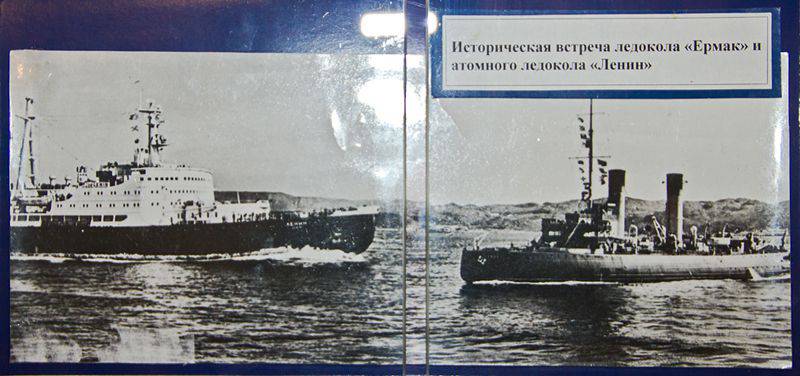
Technical progress did not stand still. 3 December 1959 of the year, the first nuclear-powered icebreaker "Lenin" entered the Soviet fleet. New diesel electric icebreakers also appeared. The archaic steam engine became a relic of the past. At the end of 1962, the "grandfather" of the national icebreaking fleet made its last trip to the Arctic. He returned to Murmansk accompanied by an escort of the Lenin nuclear-powered icebreaker. Lined warships greeted the veteran with crossed searchlight beams. The honored ship was at a crossroads - the repair it needed was already inappropriate. There were two ways: the museum or the demolition of the scrap. In September 1963 of the year “Yermak” was examined by a reputable commission, which recognized the impossibility of its further exploitation. But if the icebreaker was already too old for the ice of the Arctic, the state of the hull fully allowed the installation on the eternal parking.
For Yermak the real struggle unfolded. The prominent Soviet polar explorer I.D. played an active role in protecting the ship and trying to turn it into a museum. Papanin The government and the Ministry of the Navy sent a stream of letters from sailors, scientists, polar explorers asking them to keep Yermak for posterity. But the opponents of the old icebreaker were enough, and, unfortunately, they occupied high positions. Deputy Minister of the Navy A.S. Kolesnichenko seriously said that, say, “Yermak” has no (!) Special merits: “Aurora is enough for us”. ” In the spring of 1964, after meeting Kolesnichenko with Khrushchev, the idea of preserving the ship as a monument was finally buried. The then General Secretary generally treated the fleet with a feeling similar to annoyance. In the cold summer of 1964, a farewell to the veteran took place in Murmansk - he was towed to the ship's graveyard in anticipation of cutting into metal. In December of the same year “Yermak” did not become. The cost of its utilization exceeded the cost of conversion to the museum almost doubled.
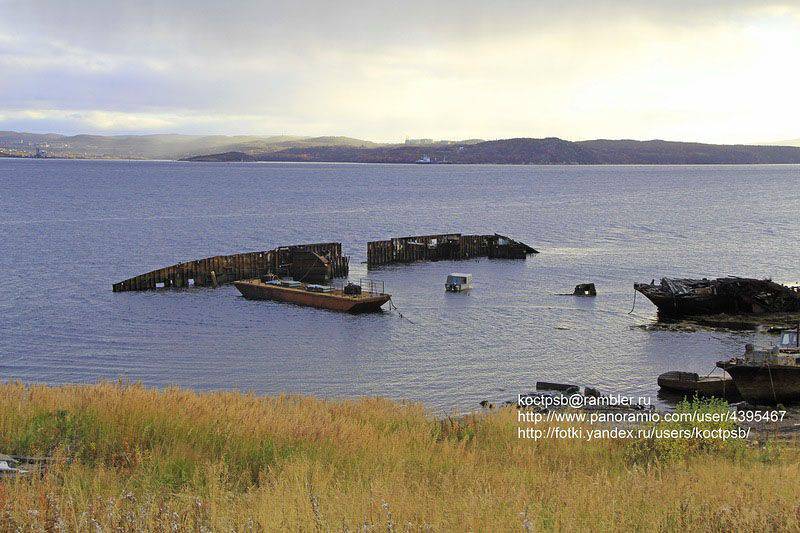
You can philosophize for a long time on the preservation of maritime traditions and respect for history. Here are examples that are much more worthy than reprisals against the world's first arctic icebreaker. The British carefully keep the flagship of Nelson battleship "Victory", compared with which "Yermak" was not so old. Until now, the world's first iron battleship Warioror, which has spent its entire service in the metropolis, is afloat. When, in 1962, the question arose of disposing of a decommissioned American battleship Alabama, residents of the state of the same name created a public fundraiser to redeem a ship and turn it into a museum. A part of the required amount (100 thousand dollars) was collected by schoolchildren with 10- and 5-cent coins, saving on lunches and breakfasts. "Alabama" is now one of the major US naval museums. Would Soviet schoolchildren be less conscious? In fairness it should be noted that the icebreaker "Lenin" was put on eternal parking in 1989 year. It is good that they managed to do this before the country he served served. The installation of the cruiser “Mikhail Kutuzov” as a museum ship seems to confirm the course towards the preservation of historical memory. Otherwise, our ships will decorate foreign ports, for example, the Kiev and Minsk TAKR.
Information